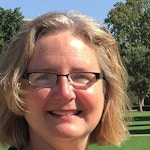The Double Skin Facade
Enhancing Air Quality in Urban Canyons
Sign in and Register
Create an Account
Overview
Abstract
The largest source of air pollution in North America is the atmospheric boundary layer of a city caused by its urban canyons with pollutants produced primarily by automobiles. The pollution mix is dominated by CO, CO2, NO2, Hc and small particulates. When sufficient sunlight is available, this leads to the development of photochemical smog and secondary pollutants such as VOCs. The removal of air pollutants at the street level is normally dependent upon air temperature stratification. Free flow of the air is important to diffusing the pollution into a larger volume. “The worst conditions for dispersion occur where there is a temperature inversion and the boundary layer is stable. Turbulence is then suppressed and upward motion is effectively eliminated”(Oke 1992). The Double Skin Facade (DSF) is a facade system technology that can not only meet the needs of the building occupants for natural ventilation, thermal efficiencies, and daylighting, but also the DSF can interact with street level ventilation. Computational Fluid Dynamics (CFD) can illustrate the velocity profile for a building without a DSF and with recirculating flow at the street level simulating the boundary layer condition (Fig. 1, left). CFD was used to illustrate the velocity profile for a building with a DSF showing the flow entering through the bottom of the DSF and exiting at building roof level approximately 60 feet (Fig. 1, right).
The double skin facade can increase flow at the street level and enhance mixing at the urban boundary layer, which will assist in the evacuation of criteria air pollutants from urban canyons. This interdisciplinary approach yields the promise and expression of a building facade that serves a functional purpose beyond aesthetics, natural ventilation, daylighting, and thermal efficiency, which presents a transformative approach to building design.
Authors

Lee A. Fithian, AIA, AICP, NCARB, LEED AP
Associate Professor
University of Oklahoma
leefithian@ou.edu
Keywords
Introduction
Human health stands to benefit at the intersection of urban
Access Restricted
Background
As urbanization and densification increases, the microclimates of urban/higher density suburban areas change. Oke explains in Boundary Layer Climates that the largest source of air pollution in North America is
Access Restricted
Method
Double Skin Facades – Evaluation and Selection
While the understanding of the capacity of the DSF to evacuate air at the street level within the zone of influence was
Access Restricted
Data
For purposes of this research, it was necessary to model double skin façade airflow perpendicular to the urban canyon as this was the most extreme system exhibiting the least amount
Access Restricted
Explanation
Table 2 illustrates the summary conditions of the relationship between the urban canyon and the perpendicular airflow. In Condition 1 we see the skimming flow regime that occurs over urban
Access Restricted
Conclusion and Future Work
This research has demonstrated that the Double Skin Façade can interact with the streetscape level air and enhance mixing at the urban boundary layer, which will assist in the evacuation
Access Restricted
Acknowledgements
I would like to gratefully acknowledge the support of my Ph.D. Chair Zahed Siddique, PhD.
Rights and Permissions
Abou-Nassar, Guy, Zahed Siddique, and Lee Fithian. 2012. “Computational Analysis to Design Energy Efficient Built Environments.” In ASME 2012 International Design Engineering Technical Conferences and Computers and Information in Engineering Conference, 177–186. American Society of Mechanical Engineers. http://proceedings.asmedigitalcollection.asme.org/proceeding.aspx?articleid=1736102.
Boake, Terri Meyer. 2008. “The Tectonics of the Double Skin.” Waterloo: School of Architecture. http://www.academia.edu/download/31978126/tectcase.pdf.
Fithian, Lee. 2015. “How Advanced Building Systems Can Offset Water Infrastructure Needs.” 52nd International Making Cities Livable eReport.
Fithian, Lee, Zahed Siddique, and Naiyu Wang. 2017. “Investing in Sustainable Buildings to Enhance Community Resilience.” ASCE Architectural Engineering Institute Conference Proceedings.
“Innovative Building Skins: Double Glass Wall Ventilated Facade.” 2015. http://www.academia.edu/180367... (accessed March 11).
Oke, T. R. 1992. Boundary Layer Climates. London; New York: Routledge.
Pugh, Thomas A. M., A. Robert MacKenzie, J. Duncan Whyatt, and C. Nicholas Hewitt. 2012. “Effectiveness of Green Infrastructure for Improvement of Air Quality in Urban Street Canyons.” Environmental Science & Technology 46 (14): 7692–99. doi:10.1021/es300826w.
“Urban Street Design Guide.” 2017. National Association of City Transportation Officials. http://nacto.org/publication/u... (accessed March 10).